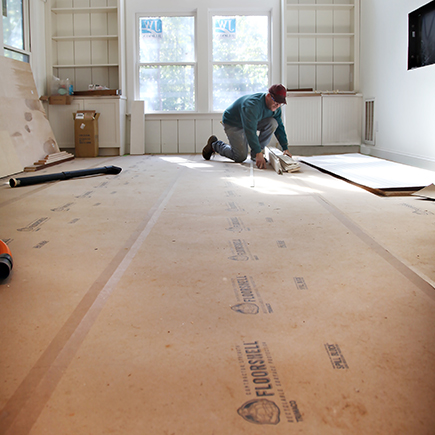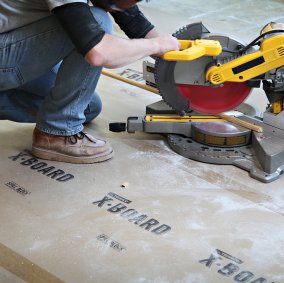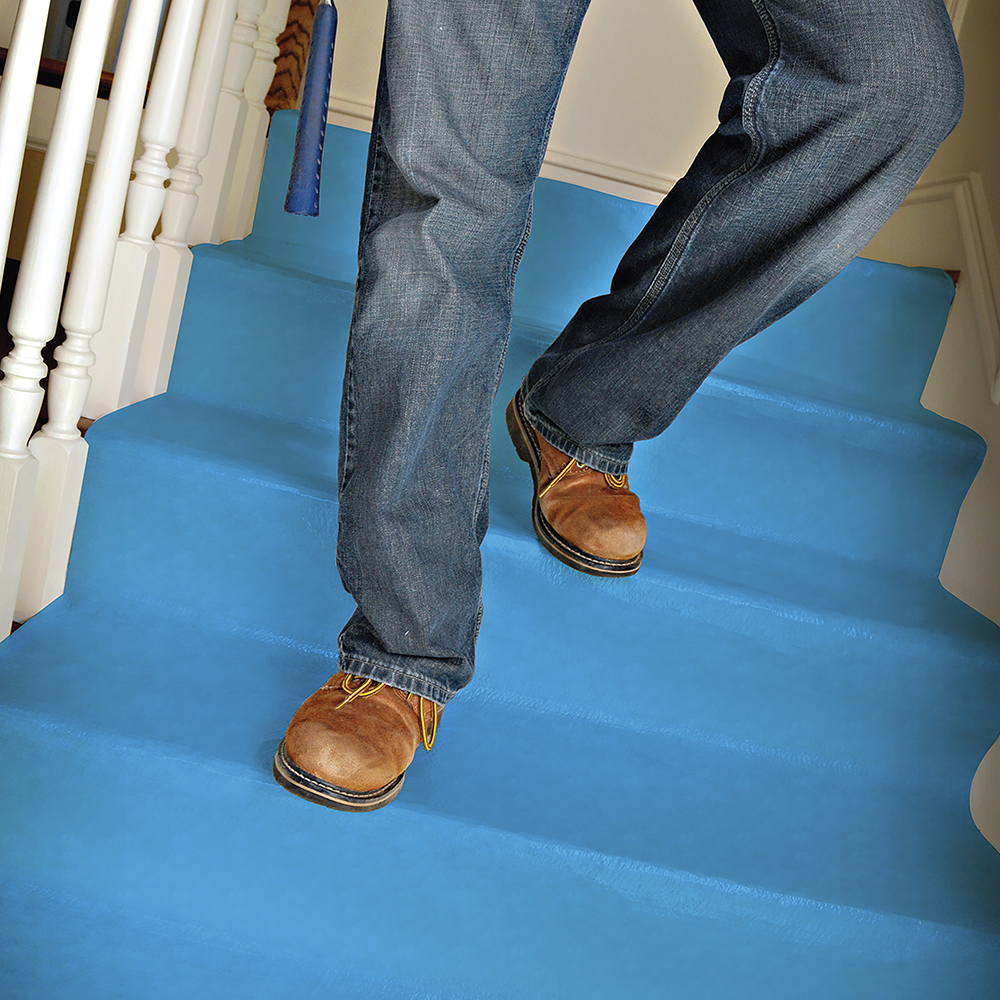
March 5, 2024
When undertaking any construction, remodeling or restoration project, it’s critical to protect finished surfaces from damage. Whether you’re a general contractor overseeing a jobsite or a homeowner tackling a DIY project, understanding how to protect different flooring materials can help prevent costly repairs and make your job easier in the long run.

There are a lot of reasons why protecting floors is a crucial step of any job.
Materials like travertine, marble, and high-end hardwoods are expensive and protecting these surfaces ensures you don’t have any additional costs associated with repairing or replacing them.
Floors are susceptible to damage from dropped tools, spills and heavy foot traffic. Proper floor protection products act as a barrier, shielding floors from scratches, stains and dents.
Chances are, your project has a timeline. Damage to floors can cause setbacks that ultimately cost you time and money. Surface protection can prevent these costly delays.
If you’re a contractor, taking the time to safeguard floors can create customer trust and satisfaction. Clients will appreciate the effort taken to keep their floors clean and damage-free.
Different types of floors require unique protection solutions. What is best for hardwood floors may not be the same as what you need for tile or polished concrete. These floor coverings can also differ based on the job being performed.

Floor Protection Paper: Builder’s paper and red rosin are an industry staple when lightweight protection is needed. They have some resistance to minor spills if cleaned up quickly before the liquid can absorb. This is a great solution for short term projects on hardwood and tile floors.
Trimaco product tip: X-Paper is thicker than red rosin and builder’s paper which means it resists tearing and doesn’t need replaced as frequently, saving you time and money.
Floor protection board: Paperboard is much thicker than red rosin or builder’s paper, which helps it withstand traffic from heavy equipment. It is also designed with liquid-resistant properties, providing better liquid holdout. Paperboard is breathable, which allows surfaces like concrete to continue to cure while you work.
Trimaco product tip: X-Board is ideal for residential and commercial paint projects. FloorShell is thicker and withstands heavy equipment and traffic on jobsites.
Dropcloths: Dropcloths are a great way to protect hard surfaces as well as carpet during a painting or staining project. Traditional canvas drops are absorbent and can protect against minor spills and overspray.
Trimaco product tip: The Eliminator is a heavy-duty dropcloth that features two layers. The thin layer of canvas on the top absorbs minor spills to avoid tracking while the PVC foam backing provides slip resistance and stops leaks in their tracks.

Impact Resistant Floor Protectors: While paperboard provides some impact resistance, you may need some additional impact protection to safeguard delicate floors beneath. For surfaces like hardwood, tile and marble, an impact-resistant floor protector can prevent dents, gouges and cracks, which could lead to costly repairs.
Trimaco product tip: Stay Put is a padded surface protector that is breathable and liquid resistant. It can be used on tile, marble and hardwood floors and stairs. Due to its residue-free tacky backing, Stay Put doesn’t slip on smooth surfaces and can be repositioned throughout the jobsite.
Carpet Film: An easy way to protect carpets from damage is to cover them with a clear carpet runner. It comes in an easy-to-apply roll and can protect carpets from stains, dirt, debris and other wear and tear during a construction or remodeling job.
Trimaco product tip: Easy Mask protective carpet film comes in multiple sizes to meet the needs of your job. It is resistant to tearing and protects synthetic carpets from damage for up to 30 days without leaving residue.
Protecting floors during any construction, remodeling and restoration job is essential to preserving their condition and avoiding costly repairs. By choosing the right temporary surface protection product based on the type of floor, contractors and homeowners can make sure floors remain pristine and damage-free.
Need help choosing the right surface protector for your job? Use our product selector tool, or contact us for assistance.
Trimaco offers more than just floor protection. Explore our catalog for dust containment, PPE, masking tape and other paint sundries.
Get Social
4 days ago
Video
Share on Facebook Share on Twitter Share on Linked In Share by Email
5 days ago
Video
Share on Facebook Share on Twitter Share on Linked In Share by Email
6 days ago
Photo
Share on Facebook Share on Twitter Share on Linked In Share by Email
1 week ago
Video
Share on Facebook Share on Twitter Share on Linked In Share by Email
1 week ago
Video
Share on Facebook Share on Twitter Share on Linked In Share by Email
Cling Cover is premium plastic sheeting clings to almost any surface, attracting overspray and keeping your workspace clean, bright, and protected.
2#trimaco #totaljobsiteprotection #savetimesavemoney #work #paint #painting #construction #constructionproducts #build #buildzoom
Prepping for renovation with Easy Mask Tape & Drape 🚨🚨
@refreshhomeimprovements
#trimaco #totaljobsiteprotection #savetimesavemoney #work #paint #painting #construction #constructionproducts #build #buildzoom #building #homebuild
Refresh your kitchen on a budget with an easy DIY backsplash ✨
4Check out our latest blog for a step by step guide: https://trimaco.com/blog/how-to-diy-a-kitchen-backsplash/
#trimaco #totaljobsiteprotection #savetimesavemoney #work #paint #painting #construction #constructionproducts #build #buildzoom
Highly absorbent and reusable, Trimaco’s Wonder Rag is your go-to for a spotless finish
2#trimaco #totaljobsiteprotection #savetimesavemoney #work #paint #painting #construction #constructionproducts #build #buildzoom #building #homebuild